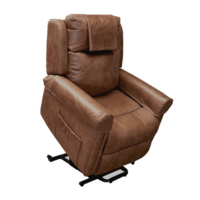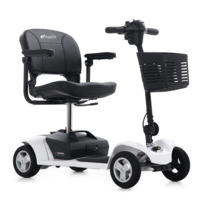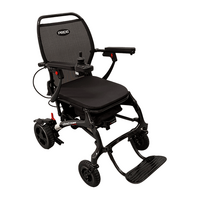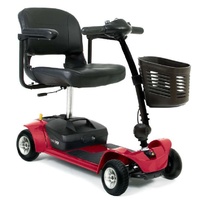Electric Wheelchair Or Mobility Scooter – What’s Right For You?
While there are essential differences between both types of mobility aids, what is ultimately right for you comes down to your needs and personal preferences. We’ve outlined a few of the factors you might want to consider before deciding on your purchase. Mobility aids, including electric wheelchairs and mobility scooters, provide people with limited mobility greater  independence and self-reliance. Both of these options allow the user to undertake numerous daily activities, such as heading to the shops or visiting friends and family.
independence and self-reliance. Both of these options allow the user to undertake numerous daily activities, such as heading to the shops or visiting friends and family.
While there are essential differences between both types of mobility aids, what is ultimately right for you comes down to your needs and personal preferences. We’ve outlined just a few of the factors you might want to consider before deciding on an electric wheelchair or mobility scooter.
Mobility scooter or electric wheelchair
Mobility scooters are designed for people who may be fairly mobile around the home, but who find it difficult to walk long distances. There are a wide range of scooters available, from smaller models that can fit into the boot of a car, through to heavy duty mobility scooters that are able to navigate steep hills and travel long distances on a single charge.
Electric wheelchairs are similar in many ways in that they are designed to assist people who have difficulty walking. However their smaller turning circle means they are more suited for use indoors.
And if you’re using it at home, chances are you’ll spend a great deal of time on your mobility aid. Electric wheelchairs offer more seating options for comfort, including by reclining the backrest and raising or lowering the foot rest.
Operation and maneuverability
Electric wheelchairs are operated using a joystick mounted on the armrest, requiring less upper body mobility to control. Mobility scooters are operated using a tiller handle and will require both hands to steer and control.
Electric wheelchairs have a smaller turning circle than mobility scooters. While there are small scooters with a tighter turning circle designed for use indoors, you will require more space between furniture to maneuver indoors.
Speed and distance
Electric wheelchairs are limited to a maximum speed of 6km/h and will travel up to 30km on a single charge. This can be affected by things such as the terrain and the weight of the user.
If distance is a concern, a mobility scooter may be a preferable option. A robust mobility scooter can travel at speeds of up to 10km/h and distances of up to 50km on a single charge. Again, while the maximum speed and distance depends on terrain, mobility scooters are designed to travel long distances outdoors.
While electric wheelchairs can be used outdoors, they are better suited to flat, even terrain and slight slopes such as access ramps. If you need to navigate difficult terrain and hills, a mobility scooter will give you the required power and stability.
Acceptance
While the best mobility device for you is the one that provides the optimum level of independence and support, there can be a perception that some devices – and therefore users – are more ‘legitimate’ than others. While unfortunate, generally the public may be more accommodating of someone in a wheelchair than in an electric scooter.
On the other hand, a mobility scooter may provide less stigma for someone who doesn’t want to be seen as a ‘wheelchair user’. There are a range of models available, from sleek, foldable travel mobility scooters to scooters that resemble motorcycles.
The team at MobilityHQ will help you find the right mobility aid for your needs and preferences. For more information, read our Buyer’s Guide to Mobility Scooters and Buyer’s Guide to Wheelchairs or contact us on 1300 017 592.

































